#15 September 1762
Explore tagged Tumblr posts
Text















Seven Years’ War: Battle of Signal Hill was fought on September 15, 1762.
#Seven Years’ War#Battle of Signal Hill#15 September 1762#anniversary#Canadian history#travel#original photography#vacation#tourist attraction#landmark#architecture#cityscape#landscape#seascape#Atlantic Ocean#summer 2015#St. John's#Newfoundland#St. John's Harbour#Narrows of St. John's Harbour#Cabot Tower#Canada
3 notes
·
View notes
Photo

Henry Clinton
Sir Henry Clinton (l. c. 1730-1795) was a British military officer who served as commander-in-chief of the British Army in the later stages of the American Revolutionary War (1775-1783). Having arrived in Boston in May 1775, he served in North America for most of the war, resigning his post in 1782 after the British defeat at the Siege of Yorktown.
The son of a British admiral, Clinton became a soldier at the age of 15 and saw action in Germany during the Seven Years' War. Thanks to his connections to British lords, he quickly rose through the ranks and was one of three British generals sent to Boston, Massachusetts, in 1775 to crush the American rebellion. Clinton was famously jealous, paranoid, and quick-tempered, traits that made it difficult for him to work with his fellow officers; still, he was well-educated in military matters and was among the most competent British tacticians of the war. As commander-in-chief, he led the British army at the Battle of Monmouth and the Siege of Charleston, but his lack of support for his second-in-command, Lord Charles Cornwallis, contributed to the British loss of the American South. After the war, he returned to England, where he received much of the blame for the British defeat before his death in December 1795.
Early Career
Little is known about Clinton's early life or childhood. He was likely born on 16 April 1730, although the time and location of his birth have been disputed; some scholars claim he was born in Newfoundland when his father was governor there, which, if true, would push his birth year back to 1732 at the earliest. What is known for certain, however, is that he came from a wealthy family of noble pedigree. His family was a cadet branch of the House of Lincoln, which could trace its earldom back to the reign of Elizabeth I of England (r. 1558-1603), and his uncle was related by marriage to the first Duke of Newcastle, who often lent his patronage to the Clinton family (Willcox, 4). Henry's father was British Admiral George Clinton (not to be confused with the future U.S. Vice President of the same name) and his mother was Anne Carle, a general's daughter. He also had two siblings, both sisters, who survived to adulthood.
Through the Duke of Newcastle's influence, Admiral Clinton was appointed governor of the Province of New York in 1741. The admiral did not arrive to take up his post until September 1743, taking his family with him. Henry, who was at most 13 when he arrived in New York, was probably educated at the Long Island school of Samuel Seabury, the future first bishop of the American Episcopal Church. In 1745, he began his military career when he enlisted in the New York militia as a lieutenant. The following year, his father procured for him a captain's commission, and he was sent to join the garrison of Louisbourg, a fort on the Saint Lawrence River that had recently been captured from the French. While stationed there, he was ambushed by a band of French and Native Americans, narrowly avoiding death by "stripping and jumping into the sea" (Willcox, 10).
In the summer of 1749, Clinton realized his prospects for military advancement in the colonies were limited, prompting him to return to England. With Newcastle's help, he was commissioned as a captain in the illustrious Coldstream Guards and, by 1758, he had risen to the rank of lieutenant colonel in the Grenadier Guards. By then, Europe was engulfed in the Seven Years' War (1756-1763) and Clinton's regiment was sent to Germany to bolster the Anglo-German army trying to prevent a French invasion of Hanover. He fought at the Battle of Villinghausen (16 July 1761) and Battle of Wilhelmsthal (24 July 1762), serving shoulder to shoulder with fellow British officers William Phillips and Lord Charles Cornwallis, both of whom would also become prominent generals in the American Revolution. He served as aide-de-camp to Charles William Ferdinand, future Duke of Brunswick, (the same Prussian general who would one day fight the French revolutionaries at the Battle of Valmy) in whose service Clinton was seriously wounded at Nauheim (30 August 1762).
Continue reading...
16 notes
·
View notes
Text
Meet the Joneses
Alright! so, lets do a line up, this is a comprehensive list of who is who, how old, and when they were born, and after this post we will be doing a bit of a deep dive into how the states work vs the nations and what that means for us. Now without further ado, time to list the little gremlins -Karla
O13 States (eldest)
Delaware: Stellen D. Jones: January 7th, 1758 Age: 29
Pennsylvania: Karla P. Jones: July 12th, 1758 Age: 29
New jersey: Lorenzo J. Jones: October 18th, 1758 Age: 29
Georgia: Monika G. Jones: January 2nd, 1760 age: 28
Connecticut: Nadia C. Jones: March, 9th, 1760 age: 28
Massachusetts: Cassandra M. Jones: July 18th, 1760 age: 28
Maryland: Marilyn Mary Jones: April 28th, 1762 age: 27
North Carolina: Gavina C. Jones: May 23rd, 1762 age: 27
South Carolina: Fianna C. Jones: May 23rd, 1762 age: 27
New Hampshire: Liepa H. Jones: December 2nd, 1762 age: 27
Virginia: Elise V. Jones: March 25th, 1764 age: 26
West Virginia: Lana V. Jones: March 25th, 1764 age: 26
New York: Felix Y. Jones: July 26th, 1764 age: 26
Rhode Island: Mia R. Jones: October 29th, 1764 age: 26
OG 13 State Capitals
D.C: Logan C. Jones: July 16, 1766 age: 25
Dover: Kustaa D. Jones: May 4th, 1766 Age:25
Harrisburg: Alexander H. Jones: February 24th, 1768 age: 24
Trenton: Eren T. Jones: June 27th, 1768 age: 24
Atlanta: Marie A. Jones: August 16th, 1768 age: 24
Annapolis: Rosalie A. Jones: January 19th, 1770 age: 23
Boston: Sorina B. Jones: June 15th, 1770 Age: 23
Hartford: Rytas H. Jones: September 23, 1770 age: 23
Columbia: Merlin C. Jones: May 7th, 1772 age: 22
Raleigh: Viktor R. Jones: October 7th, 1772 age: 22
Concord:Dorota C. Jones: December 12th, 1772 age: 22
Albany: Chiara A. Jones: April 7th, 1774 age: 21
Richmond: Jakob R. Jones: October 21st, 1774 age: 21
Providence: Estevo P. Jones: May 17th, 1776 age: 20
Montpelier: Eiro M. Jones: October 8th, 1776 age: 20
Younger States
Vermont: Dominik V. Jones: March 4th, 1783 age: 19
Kentucky: Olivia K. Jones: May 1st, 1783 age: 19
Tennessee: Mariel T. Jones: March 7th, 1784 age: 18
Ohio: Noah O. Jones: July 17th, 1784 age: 18
Louisiana: Claire L. Jones: April 30, 1786 age: 17
Indiana: Aiyla I. Jones: June 11, 1786 age: 17
Mississippi: Alice M. Jones: December 10th, 1786 age: 17
Illinois: Pallaton I. Jones: February 3rd, 1789 age: 16
Alabama: Alana A. Jones: June 13th, 1789 age: 16
Maine: Leva M. Jones: December 15th, 1789 age: 16
Missouri: Korri M. Jones: January 26th, 1795 age: 15
Arkansas: Dallas A. Jones: May 15th, 1795 age: 15
Michigan: Avar M. Jones: September 10th, 1795 age: 15
Florida: Flora F. Jones: March 3rd, 1804 age: 14
Texas: Sebastian T. Jones: June 29th, 1804 age: 14
Iowa: Nova I. Jones: December 28th, 1804 age: 14
Wisconsin: Axel W. Jones: March 29, 1811 age: 13
California: Evora C, Jones: July 9th, 1811 age: 13
Minnesota: Luvianna M. Jones: October 11th, 1811 age: 13
Oregan: James O. Jones: January 29th, 1817 age: 12
Kansas: Katrin K. Jones: October 20, 1817 age: 12
Nevada: Julien N. Jones: March 1st, 1824 age: 11
Nebraska: Lian August 1st, 1824 age: 11
Colorado: Fritz C. Jones: October 31st, 1824 age: 11
North Dakota: Lulla D. Jones: June 2nd, 1832 age: 10
South Dakota: Svana D. Jones: June 2nd, 1832 age: 10
Montana: Nikolai M. Jones: December 8th, 1832 age: 10
Washington: Adrian W. Jones: April 10th, 1838 age: 9
Idaho: Klaus I. Jones: July 3, 1838 age: 9
Wyoming: Oscar W. Jones: November 11th, 1838 age: 9
Utah: Ancia U. Jones: January 4th, 1850 age: 8
Oklahoma: Kai O. Jones: April 6th, 1850 age: 8
New Mexico: Alicia M. Jones: November 16th, 1850 age: 8
Arizona: Luta A. Jones: January 6th, 1861 age: 7
Alaska: Anya A. Jones: April 14, 1861 age: 7
Hawaii: Leilani H. Jones: December 24, 1861 age: 7
Territories
Guam: Ina G. Jones: July 11th, 1883 age: 6
Puerto Rico: Benito R. Jones: October 13th, 1883 age:6
Virgin Islands: Beret Freja Jones: March 32st, 1902 age:5
American Samoa: Sefina S. Jones: February 20th, 1903 age: 5
Northern Mariana Islands: Nari M. Jones: November 4th, 1908 age: 5
Cities:
Dallas: Dylan D. Jones: April 4th, 1953 age: 4
Philadelphia: Erika P. Jones: October 3rd, 1956 age: 4
NYC: Nathan Y. Jones: August 9th, 1957 age: 4
Manhattan: Stefan M. Jones: July 7th, 1963 Age: 4
Miami: Alvaro M. Jones: May 28th, 1968 age: 3
Los Angeles: Lucca Angel Jones: February 9th, 1972 age: 3
Chicago: Bianca C. Jones: February 9th, 1972 age: 3
Hollywood: Satomi Holly Jones: September 7th, 1979 age: 2
Phoenix: Zoe P. Jones: June 14th, 1984 age: 2
Seattle: Owen S. Jones: June 16th, 1988 age: 2
Portland: Kaji P. Jones: April 16th, 1991 age: 1
New Orleans: Elliott O. Jones: August 14th, 1997 age: 1
New Philadelphia: Ausra P. Jones: November 14th, 2003 age: >1 (sometime around 10 months)
#aph states#hetalia states#aph america#hetalia america#aph#hetalia#dont ask me why these specific dates#its been years#I think im doing this right?#the comprehensive list
4 notes
·
View notes
Text

THE DESCRIPTION OF SAINT ALPHONSUS LIGUORI Feast Day: August 1
"A devout servant of Mary shall never perish."
The founder of the Redemptorists, formally known as the Congregation of the Most Holy Redeemer, was born Alphonsus Maria de Liguori, in Marianella, near Naples, then part of the Kingdom of Naples on September 27, 1696. He was the eldest of seven children of Giuseppe Liguori, a naval officer and Captain of the Royal Galleys, and Anna Maria Caterina Cavalieri. The family was of noble lineage, but the branch to which Liguori belonged had become somewhat impoverished.
He learned to ride and fence but was never a good shot because of poor eyesight. He was educated in the best school of the city, and took a Doctorate in Law (civil and canon law) at the age of 16.
In 1722, he lost the first case of his career at the age of 27, and fell into deep crisis. Moreover, he heard an interior voice, saying: 'Leave the world, and give yourself to me.'
Alphonsus decided to offer himself as a novice to the Oratory of St. Philip Neri in 1723, with the intention of becoming a priest. His father opposed the plan, but after two months (and with his Oratorian confessor's permission), he and his father compromised: he would study for the priesthood, but not as an Oratorian, and would live at home.
After his ordination on December 21, 1726 at age 30, Alphonsus became very popular because of his interesting and simple preaching. He said: 'I have never preached a sermon which the poorest old woman in the congregation could not understand.'
He also fought bravely against Jansenism, the heresy that supported a very strict morality. He said that the penitents should be treated as souls to be saved rather than as criminals to be punished. He is said to have never refused absolution to a penitent.
On November 9, 1732, Alphonsus founded the Congregation of the Most Holy Redeemer, with the charism of preaching popular missions in the city and the countryside. Alphonsus was well known as a moral theologian, and his masterpiece, The Moral Theology, was approved by the Pope himself.
Appointed and consecrated as the bishop of Sant' Agata de Goti by Ferdinando Maria de Rossi on June 20, 1762, he set out to reform the people and the clergy. He suspended those priests who celebrated Mass in less than 15 minutes, and sold his carriage and episcopal ring in order to give the money to the poor.
In the last years of his life, he suffered a painful sickness and a bitter persecution from his fellow priests, who had him dismissed from the congregation. He died on August 1, 1787 at the age of 90, having endured everything as trials permitted by God for his sanctification.
Canonized a saint by Pope Gregory XVI on May 26, 1839, he declared a Doctor of the Church in 1871 by Pope Pius IX. He is the patron of arthritis sufferers, lawyers, confessors, moralists and vocations.
#random stuff#catholic#catholic saints#alphonsus liguori#alphonsus maria de liguori#redemptorists#congregation of the most holy redeemer#doctor of the church
5 notes
·
View notes
Text
Napoleonic birthday calendar
A quick first attempt at a combined calender; I hope I have not accidentally dropped somebody on the way [searches floor]. Whom or what else should we add? I’ve already taken the liberty to add Junot and Duroc.
And just for the record: All the work was done by @northernmariette, I’m just posting on her behalf due to technical problems.
January
3 Jan 1777: Elisa Bonaparte-Baciocchi
7 Jan 1768: Joseph Bonaparte
🎖 10 Jan 1769: Marshal Ney
🎖 26 Jan 1763: Marshal Bernadotte
February
🎖 13 Feb 1768: Marshal Mortier
March
🎖 2 Mar 1770: Marshal Suchet
🎖 13 Mar 1763: Marshal Brune
20 Mar 1822: Napoléon II,
25 Mar 1782: Caroline Bonaparte-Murat
🎖 25 Mar 1767: Marshal Murat
27 Mar 1746: Charles (Carlo) Bonaparte
🎖 29 Mar 1769: Marshal Soult
April
10 Apr 1783: Hortense de Beauharnais-Bonaparte
🎖 10 Apr 1769: Marshal Lannes
🎖 13 Apr 1764: Marshal Gouvion Saint-Cyr
🎖 25 Apr 1767: Marshal Oudinot
🎖 29 Apr 1762: Marshal Jourdan
May
🎖 6 May 1758: Marshal Masséna
🎖 7 May 1763: Marshal Poniatowsky
🎖 10 May 1770: Marshal Davout
21 May 1775: Lucien Bonaparte
🎖 28 May 1735: Marshal Kellerman
🎖 31 May 1754: Marshal Pérignon
June
23 June 1763: Joséphine Bonaparte
July
🎖 20 Jul 1774: Marshal Marmont
🎖 31 Jul 1754: Marshal Moncey
August
🎖 6 Aug 1768: Marshal Bessières
15 Aug 1769: Napoléon Bonaparte
24 Aug 1750: Laetitia Ramolino-Bonaparte
September
2 Sept 1778: Louis Bonaparte
3 Sept 1781: Eugène de Beauharnais
24 Sept 1771: Junot
October
20 Oct 1780: Pauline Bonaparte
🎖 21 Oct 1759: Marshal Augereau
🎖 23 Oct 1766: Marshal Grouchy
🎖 25 Oct 1755: Marshal Lefebvre
25 Oct 1772: Duroc
November
15 Nov 1784: Jérôme Bonaparte
🎖 17 Nov 1765: Marshal Macdonald
🎖 20 Nov 1753: Marshal Berthier
December
🎖 7 Dec 1764: Marshal Victor
🎖 8 Dec 1742: Marshal Serurier
12 Dec 1791: Marie-Louise Bonaparte
56 notes
·
View notes
Text
After his falling out with Fritz, Voltaire used the name "Luc" to refer to him in letters. This was to avoid the possibility of anyone intercepting the mail and recognizing it to be about Frederick. He used "Luc" as it was also the name of his temperamental pet monkey, and the word "cul" (ass) spelt backwards. It's used in over 100 of his letters to friends, but I selected some of my favorites which really show how strongly V could hold a grudge and that he never really forgave Fritz for Frankfurt... (The odd spelling is all V's. 1700s inconsistent spellings and all that)
"Dieu mercy nos affaires vont bien en Hesse, et le Roy de Prusse à eu sur les oreilles dans une rencontre assez rude. Les Russes avancent. Luc sera matté [maté?]. Je me meurs d'envie de le voir humilié."
(“Thank God our affairs are going well in Hesse, and the King of Prussia had to deal with a rather rough encounter. The Russians are advancing. Luc will be subdued. I'm dying to see him humiliated.")
- Voltaire to Comte d’Argental, 23 June 1759
"Je me mêle de plaire à l'autocratrice de touttes les Russies. Il me faut une impératrice au moins dans mes intérêts, car je ne peux en conscience aimer Luc. Ce roy n'a pas une assez belle âme pour moy. Il me semble que M. le duc de Choiseuil le connaît bien. Je vous demande en grâce mon cher ange de souhaitter au moins qu'il soit puni."
("I try to please the autocratress of all the Russias. I need an Empress at least in my interests, because I cannot in conscience love Luc. This king doesn't have a pretty enough soul for me. It seems to me that the Duc de Choiseuil knows him well. I beg you in grace, my dear angel, to wish at least that he is punished.")
- Voltaire to Comte d’Argental, 29 June 1759
"Je n'aime point Luc, il s'en faut baucoup. Je ne lui pardonnerai jamais ny son infâme procédé avec ma nièce, ny la hardiesse qu'il a de m'écrire deux fois par mois des choses flatteuses sans avoir jamais réparé ses torts. Je désire baucoup sa profonde humiliation, le châtiment du pécheur; je ne sçai si je désire sa damnation éternelle."
("I do not like Luc, far from it. I will never forgive him nor his infamous behavior with my niece, nor his boldness in writing flattering things to me twice a month without ever having righted his wrongs. I very much desire his deep humiliation, the punishment of the sinner; I do not know if I desire his eternal damnation.")
— Voltaire to Comte d'Argental, 19 August 1759
"Luc se débat violemment mais Luc périra, je vous en réponds. C'est un autre fou dangereux, et c'est bien dommage."
("Luc struggles violently but Luc will perish, I tell you. He's another dangerous madman, and that's a shame")
- Voltaire to d’Alembert, 15 October 1759
"Luc est toujours Luc, très embarrassé, et n'embarrassant pas moins les autres, étonnant l'Europe, l'appauvrissant, l'ensanglantant, et faisant des vers, et m'écrivant quelquefois les choses du monde les plus singulières"
("Luc is still Luc, very embarrassed, and embarrassing others no less, astonishing Europe, impoverishing it, bloodying it, and writing verses, and sometimes writing to me the most singular things of the world")
- Voltaire to the his niece, the Marquise de Florain, 24 November 1759
Denial bonus:
"Je vous parle rarement de Luc, parce que je ne pense plus à lui: cependant, s'il était capable de vivre tranquille et en philosophe, et de mettre à écraser l' infâme la centième partie de ce qu'il lui en a coûté pour faire égorger du monde, je sens que je pourrais lui pardonner"
(“I rarely speak to you about Luc, because I no longer think of him: however, if he were able to live quietly, as a philosopher, and put to crushing the infamous with one hundredth of what it has cost him to cut the throats of the world, I feel I could forgive him")
- Voltaire to d’Alembert, 15 September 1762
#''I nO lOnGeR tHiNk Of HiM''#that hits different after youve spent all day sorting through letters where he mentions Fritz#they were consistent and numerous. all throughout the 7YW#i have anotger batch i wanna translate#that focus on his reaction to Fritz' loss at Kolín#which are equally cruel crvhkzn#but the excerpts i chose are longer so im still working on them#Voltaire#Frederick the Great
73 notes
·
View notes
Text
an endearing marxist syllabus
Summer and Fall/Autumn 2021 – Winter 2022
I. What is the Left? – What is Marxism?
Thursdays, starting July 29th 6:00 - 8:00 p.m. SEC Plaza, Memorial Union, Oregon State University 2501 SW Jefferson Way, Corvallis, OR 97331
• required / + recommended reading
Marx and Engels readings pp. from Robert C. Tucker, ed., Marx-Engels Reader (Norton 2nd ed., 1978)
Week A. Introduction: Capital in history | Jul. 29, 2021
• Max Horkheimer, "The little man and the philosophy of freedom" (1926–31)
• epigraphs on modern history and freedom by Louis Menand (on Marx and Engels), Karl Marx, on "becoming" (from the Grundrisse, 1857–58), and Peter Preuss (on history)
+ Being and becoming (freedom in transformation) chart of terms
• Chris Cutrone, "Capital in history" (2008)
+ Capital in history timeline and chart of terms
+ video of Communist University 2011 London presentation
+ Capitalist contradiction chart of terms
• Cutrone, "The Marxist hypothesis" (2010)
• Cutrone, “Class consciousness (from a Marxist persective) today” (2012)
+ G.M. Tamas, "Telling the truth about class" [HTML] (2007)
+ Robert Pippin, "On Critical Theory" (2004)
+ Rainer Maria Rilke, "Archaic Torso of Apollo" (1908)
Week B. 1960s New Left I. Neo-Marxism | Aug. 5, 2021
• Martin Nicolaus, “The unknown Marx” (1968)
+ Commodity form chart of terms
+ Capitalist contradiction chart of terms
+ Organic composition of capital chart of terms
+ Marx on surplus-value chart of terms
• Theodor W. Adorno, “Late Capitalism or Industrial Society?” (AKA “Is Marx Obsolete?”) (1968)
• Moishe Postone, “Necessity, labor, and time” (1978)
+ Postone, “Interview: Marx after Marxism” (2008)
+ Postone, “History and helplessness: Mass mobilization and contemporary forms of anticapitalism” (2006)
+ Postone, “Theorizing the contemporary world: Brenner, Arrighi, Harvey” (2006)
Week C. 1960s New Left II: Gender and sexuality | Aug. 12, 2021
The situation of women is different from that of any other social group. This is because they are not one of a number of isolable units, but half a totality: the human species. Women are essential and irreplaceable; they cannot therefore be exploited in the same way as other social groups can. They are fundamental to the human condition, yet in their economic, social and political roles, they are marginal. It is precisely this combination — fundamental and marginal at one and the same time — that has been fatal to them.
— Juliet Mitchell, "Women: The longest revolution" (1966)
+ Capitalist contradiction chart of terms
• Juliet Mitchell, “Women: The longest revolution” (1966)
• Clara Zetkin and Vladimir Lenin, “An interview on the woman question” (1920)
• Theodor W. Adorno, “Sexual taboos and the law today” (1963)
• John D’Emilio, “Capitalism and gay identity” (1983)
Week D. 1960s New Left III. Anti-black racism in the U.S. | Aug. 19, 2021
As a social party we receive the Negro and all other races upon absolutely equal terms. We are the party of the working class, the whole working class, and we will not suffer ourselves to be divided by any specious appeal to race prejudice; and if we should be coaxed or driven from the straight road we will be lost in the wilderness and ought to perish there, for we shall no longer be a Socialist party.
— Eugene Debs, "The Negro in the class struggle" (1903)
+ Eugene Debs, "The Negro in the class struggle" (1903)
+ Debs, "The Negro and his nemesis" (1904)
+ Capitalist contradiction chart of terms
• Richard Fraser, “Two lectures on the black question in America and revolutionary integrationism” (1953)
+ Fraser, "For the materialist conception of the Negro struggle" (1955)
• James Robertson and Shirley Stoute, “For black Trotskyism” (1963)
+ Spartacist League, “Black and red: Class struggle road to Negro freedom” (1966)
+ Bayard Rustin, “The failure of black separatism” (1970)
• Adolph Reed, “Black particularity reconsidered” (1979)
+ Reed, “Paths to Critical Theory” (1984)
Week E. Frankfurt School precursors | Aug. 26, 2021
+ Capitalist contradiction chart of terms
• Wilhelm Reich, “Ideology as material power” (1933/46)
• Siegfried Kracauer, “The mass ornament” (1927)
+ Kracauer, “Photography” (1927)
+ Being and becoming (freedom in transformation) / immanent dialectical critique chart of terms
Week F. Radical bourgeois philosophy I. Rousseau: Crossroads of society | Sep. 2, 2021
To be radical is to go to the root of the matter. For man, however, the root is man himself. — Marx, Critique of Hegel’s Philosophy of Right (1843)
Whoever dares undertake to establish a people’s institutions must feel himself capable of changing, as it were, human nature, of transforming each individual, who by himself is a complete and solitary whole, into a part of a larger whole, from which, in a sense, the individual receives his life and his being, of substituting a limited and mental existence for the physical and independent existence. He has to take from man his own powers, and give him in exchange alien powers which he cannot employ without the help of other men.
— Jean-Jacques Rousseau, On the Social Contract (1762)
• Max Horkheimer, "The little man and the philosophy of freedom" (1926–31)
• epigraphs on modern history and freedom by James Miller (on Jean-Jacques Rousseau), Louis Menand (on Marx and Engels), Karl Marx, on "becoming" (from the Grundrisse, 1857–58), and Peter Preuss (on history)
+ Rainer Maria Rilke, "Archaic Torso of Apollo" (1908)
+ Robert Pippin, "On Critical Theory" (2004)
+ Being and becoming (freedom in transformation) chart of terms
• Jean-Jacques Rousseau, Discourse on the Origin of Inequality (1754) PDFs of preferred translation (5 parts): [1] [2] [3] [4] [5]
+ Capital in history timeline and chart of terms
• Rousseau, selection from On the Social Contract (1762)
Week G. Radical bourgeois philosophy II. Adam Smith: On the wealth of nations (part 1) | Sep. 9, 2021
• Adam Smith, selections from The Wealth of Nations
Volume I [PDF] Introduction and Plan of the Work Book I: Of the Causes of Improvement… I.1. Of the Division of Labor I.2. Of the Principle which gives Occasion to the Division of Labour I.3. That the Division of Labour is Limited by the Extent of the Market I.4. Of the Origin and Use of Money I.5 Of the Real and Nominal Price of Commodities I.6. Of the Component Parts of the Price of Commodities I.7. Of the Natural and Market Price of Commodities I.8. Of the Wages of Labour I.9. Of the Profits of Stock Book III: Of the different Progress of Opulence in different Nations III.1. Of the Natural Progress of Opulence III.2. Of the Discouragement of Agriculture in the Ancient State of Europe after the Fall of the Roman Empire III.3. Of the Rise and Progress of Cities and Towns, after the Fall of the Roman Empire III.4. How the Commerce of the Towns Contributed to the Improvement of the Country
Week H. Radical bourgeois philosophy III. Adam Smith: On the wealth of nations (part 2) | Sep. 16, 2021
• Smith, selections from The Wealth of Nations
Volume II [PDF] IV.7, Of Colonies V.1. Of the Expences of the Sovereign or Commonwealth
Week I. Radical bourgeois philosophy IV. What is the Third Estate? | Sep. 23, 2021
• Abbé Emmanuel Joseph Sieyès, What is the Third Estate? (1789) [full text]
+ Bernard Mandeville, The Fable of the Bees (1732)
Week J. Radical bourgeois philosophy V. Kant and Constant: Bourgeois society | Sep. 30, 2021
• Immanuel Kant, "Idea for a universal history from a cosmopolitan point of view" and "What is Enlightenment?" (1784)
+ Being and becoming (freedom in transformation) chart of terms
+ Kant's 3 Critiques [PNG] and philosophy [PNG] charts of terms
• Benjamin Constant, "The liberty of the ancients compared with that of the moderns" (1819)
+ Jean-Jacques Rousseau, Discourse on the origin of inequality (1754)
+ Rousseau, selection from On the social contract (1762)
Week K. Radical bourgeois philosophy VI. Hegel: Freedom in history | Oct. 7, 2021
• G.W.F. Hegel, Introduction to the Philosophy of History (1831) [HTML] [PDF pp. 14-128] [Audiobook]
+ Being and becoming (freedom in transformation) chart of terms
Week 1. What is the Left? I. Capital in history | Oct. 14, 2021
• Max Horkheimer, "The little man and the philosophy of freedom" (1926–31)
• epigraphs on modern history and freedom by Louis Menand (on Marx and Engels), Karl Marx, on "becoming" (from the Grundrisse, 1857–58), and Peter Preuss (on history)
+ Being and becoming (freedom in transformation) chart of terms
• Chris Cutrone, "Capital in history" (2008)
+ Capital in history timeline and chart of terms
+ video of Communist University 2011 London presentation
+ Capitalist contradiction chart of terms
• Cutrone, "The Marxist hypothesis" (2010)
• Cutrone, “Class consciousness (from a Marxist persective) today” (2012)
+ G.M. Tamas, "Telling the truth about class" [HTML] (2007)
+ Robert Pippin, "On Critical Theory" (2004)
+ Rainer Maria Rilke, "Archaic Torso of Apollo" (1908)
Week 2. What is the Left? II. Utopia and critique | Oct. 21, 2021
• Max Horkheimer, selections from Dämmerung (1926–31)
• Adorno, “Imaginative Excesses” (1944–47)
• Leszek Kolakowski, “The concept of the Left” (1958)
• Herbert Marcuse, "Note on dialectic" (1960)
• Marx, To make the world philosophical (from Marx's dissertation, 1839–41), pp. 9–11
• Marx, For the ruthless criticism of everything existing (letter to Arnold Ruge, September 1843), pp. 12–15
+ Capitalist contradiction chart of terms
+ Being and becoming (freedom in transformation) / immanent dialectical critique chart of terms
Week 3. What is Marxism? I. Socialism | Oct. 28, 2021
• Marx, selections from Economic and philosophic manuscripts (1844), pp. 70–101
+ Commodity form chart of terms
+ Being and becoming (freedom in transformation) / immanent dialectical critique chart of terms
+ Capitalist contradiction chart of terms
• Marx and Friedrich Engels, selections from the Manifesto of the Communist Party (1848), pp. 469–500
• Marx, The coming upheaval (from The Poverty of Philosophy, 1847), pp. 218–19
Week 4. What is Marxism? II. Revolution in 1848 | Nov. 4, 2021
• Marx, Address to the Central Committee of the Communist League (1850), pp. 501–511 and Class struggle and mode of production (letter to Weydemeyer, 1852), pp. 218–220
• Engels, The tactics of social democracy (Engels's 1895 introduction to Marx, The Class Struggles in France), pp. 556–573
• Marx, selections from The Class Struggles in France 1848–50 (1850), pp. 586–593
• Marx, selections from The 18th Brumaire of Louis Bonaparte (1852), pp. 594–617
Week 5. What is Marxism? III. Bonapartism | Nov. 11, 2021
+ Karl Korsch, "The Marxism of the First International" (1924)
• Marx, Inaugural address to the First International (1864), pp. 512–519
• Marx, selections from The Civil War in France (1871, including Engels's 1891 Introduction), pp. 618–652
+ Korsch, Introduction to Marx, Critique of the Gotha Programme (1922)
• Marx, Critique of the Gotha Programme, pp. 525–541
• Marx, Programme of the Parti Ouvrier (1880)
Week 6. What is Marxism? IV. Critique of political economy | Nov. 18, 2021
The fetish character of the commodity is not a fact of consciousness; rather it is dialectical, in the eminent sense that it produces consciousness. . . . [P]erfection of the commodity character in a Hegelian self-consciousness inaugurates the explosion of its phantasmagoria. — Theodor W. Adorno, letter to Walter Benjamin, August 2, 1935
+ Commodity form chart of terms
+ Capitalist contradiction chart of terms
+ Organic composition of capital chart of terms
+ Marx on surplus-value chart of terms
• Marx, selections from the Grundrisse (1857–61), pp. 222–226, 236–244, 247–250, 276–293 ME Reader pp. 276–281
• Marx, Capital Vol. I, Ch. 1 Sec. 4 "The fetishism of commodities" (1867), pp. 319–329
+ Being and becoming (freedom in transformation) / immanent dialectical critique chart of terms
Winter break readings
+ Richard Appignanesi and Oscar Zarate / A&Z, Introducing Lenin and the Russian Revolution / Lenin for Beginners (1977) + Sebastian Haffner, Failure of a Revolution: Germany 1918–19 (1968) + Tariq Ali and Phil Evans, Introducing Trotsky and Marxism / Trotsky for Beginners (1980) + James Joll, The Second International 1889–1914 (1966) + Carl Schorske, The SPD 1905-17: The Development of the Great Schism (1955) + J.P. Nettl, Rosa Luxemburg (1966) [Vol. 1] [Vol. 2] + Edmund Wilson, To the Finland Station: A Study in the Writing and Acting of History (1940), Part II. Ch. (1–4,) 5–10, 12–16; Part III. Ch. 1–6
Week 8. Nov. 25, 2021 U.S. Thanksgiving break
Week 7. What is Marxism? V. Reification | Dec. 2, 2021
• Georg Lukács, “The phenomenon of reification” (Part I of “Reification and the consciousness of the proletariat,” History and Class Consciousness, 1923) + Commodity form chart of terms + Reification chart of terms + Capitalist contradiction chart of terms + Organic composition of capital chart of terms + Being and becoming (freedom in transformation) / immanent dialectical critique chart of terms
Week 9. What is Marxism? VI. Class consciousness | Dec. 9, 2021
• Lukács, “Class Consciousness” (1920), Original Preface (1922), “What is Orthodox Marxism?” (1919), History and Class Consciousness (1923) + Capitalist contradiction chart of terms + Reification chart of terms + Being and becoming (freedom in transformation) / immanent dialectical critique chart of terms + Herbert Marcuse, "Note on dialectic" (1960) + Marx, Preface to the First German Edition and Afterword to the Second German Edition (1873) of Capital (1867), pp. 294–298, 299–302
Week 10. What is Marxism? VII. Ends of philosophy | Dec. 16, 2021
• Korsch, “Marxism and philosophy” (1923)
+ Capitalist contradiction chart of terms
+ Being and becoming (freedom in transformation) / immanent dialectical critique chart of terms
+ Herbert Marcuse, "Note on dialectic" (1960) + Marx, To make the world philosophical (from Marx's dissertation, 1839–41), pp. 9–11
+ Marx, For the ruthless criticism of everything existing (letter to Arnold Ruge, September 1843), pp. 12–15
+ Marx, "Theses on Feuerbach" (1845), pp. 143–145
21 notes
·
View notes
Photo










Thomas Gainsborough’s portraits of George III, Queen Charlotte and 13/15 of their children, 1782. Prince Frederick (1763 - 1827) is not included in the set for unknown reasons, while Princess Amelia (1783 - 1810) was born a year after the portraits.
“They were painted at Windsor in September and October 1782. On 30 October the Morning Herald reported that Gainsborough ‘has just completed his painting of the whole Royal Family, at Windsor... all of which are spoken of as highly-finished characteristic portraits of the illustrious personages who sat to him’. All the portraits were exhibited at the Royal Academy in 1783.“
- The Royal Collection Trust
1: George III (1738 - 1820)
2: Queen Charlotte (1744 - 1818)
3: George, Prince of Wales (1762 - 1830)
4: Prince William (1765 - 1837)
5: Charlotte, Princess Royal (1766 - 1828)
6: Prince Edward (1867 - 1820)
7: Princess Augusta (1768 - 1840)
8: Princess Elizabeth (1770 - 1840)
9: Prince Ernest (1771 - 1851)
10: Prince Augustus (1773 - 1843)
11: Prince Adolphus (1774 - 1850)
12: Princess Mary (1776 - 1857)
13: Princess Sophia (1777 - 1848)
14: Prince Octavius (1779 - 1783)
15: Prince Alfred (1780 - 1782)
#george iii#queen charlotte#king george iii#george iv#william iv#charlotte princess royal#edward duke of kent#princess augusta#princess elizabeth#ernest augustus of hanover#adolphus duke of cambridge#princess mary#princess sophia#prince octavius#prince alfred#1782#1780s#1700s#thomas gainsborough
203 notes
·
View notes
Text
"A historical chronological depiction from an imaginary Italy: a guess the reference game". 100th Anniversary
Unknown: Pdor Mythos Unknown: Appears the superheroes gene "Vip" 10'000 A.C: In the Mediterranean basin lives a society of amazoness 89 A.C: Marcus Aemilius Scaurus is born 71 A.C: Spartacus leads a slaves rebellion 55 A.C: Tros of Samothrace takes the parts of the Breton resistance against the Roman conquest of Britain 50 A.C: Julius Augustus Caesar's complete conquest of Gaul finds resistance against a village in Armorica 11 March 44 A.C: Julius Augustus Caesar is murdered 80: Barbarian Ardarico's conquest of Rome miserably fails; Flavian Amphitheatre is inaugurated and Timo becomes a gladiator 128: Architect Lucius Quintus Modestus repeatedly travels through time until the 21st century and visits the modern Japan 536: Martinus Paduei, a mysterious genius ahead of his time, leaves his mark in history as inventor, business owner, strategist and politician 569: King Alboin befriends and welcomes a sly and smart peasant to his court in Verona 726: Girolama Pellacani is raped by the Longobards 1050: Brancaleone of Norcia is born 1076: The saint hermit of Bismantova is sent to Aquileia in search of allies at the behest of Pope Gregory VII, but is hindered by the devil 1080: Brancaleone of Norcia takes part at the first crusade 1141: Baudolino is born 1150: Various supernatural events take place at the castle of Otranto 1249: The company of Selva Bella participates at the mission to free Enzo of Sardinia 1271: Marco Polo begins his travel toward the Orient 1280: Marco Polo reaches the court of Kublai Khan and tell him about the 55 cities 1295: Marco Polo returns to Venice Early XIV Century: To win the maritime war against Venice, the Genoese captain Luigi Gottardi builds the underground canal of Meloria 1300: Poet Dante Alighieri visits the afterlife in a week 1327: William of Baskerville is involved in a murder case sets in a benedictine abbey 15 April 1452: Leonardo da Vinci is born 1478: Takes places the quests of the "Company of the Gallows" 1506: Arte Spalletti becomes an artist 1534: Two english brothers find a passage for a subterranean world where the time flows more slowly and is populated by a society of pygmies 1537: During the battle of Turin a french soldier mysteriously survives to several deadly wounds 1570: To save her lover, war-prisoner at Famagosta in Cyprus, the duchess of Eboli wears an armor and under the alias of Captain Storm fights several battle against the Ottoman Empire 1595: The suicide of two lovers leads peace in a longtime feud between two Veronese families 1630: The black plague continues its killspread, Spanish local lord Don Rodrigo is found dead 1643: Nobleman Roberto de la Grive is presumed lost after a shipwreck in the Pacific Ocean 1650s: Alchemist Girolamo Fumagalli develops the basic technique of thanatography 1660s: Viscount Medardo of Terralba returns changed and maimed in a strange and impossible way from the Ottoman wars in Bohemia 1686: After losing his brothers during the Franco-Spanish war at the hand of Duke Wan Guld, the Lord of Ventimiglia Emilio of Roccabruna promises to avenge them and becomes the notorious Black Corsair 1711: A group of alchemists evoke a demon to gain eternal life 1713: Sir Frances Varney commits suicide by throwing himself into Mt. Vesuvius 7 January 1730: In Siena is approved the Notice of Violante of Bavaria 1741: Antonio Salvatore "Totò" Sapore invents pizza to bring peace between French and Neapolitan armies 1750s: Armando "The Scorpion" Catalano seeks the Templar treasure 1762: Reverend Yorick, friend of Tristram Shandy, visits France and Italy for a health issue 1764: Father Schedoni is involved in a conspiracy 1767: Cosimo Piovasco of Rondò, future baron of Ombrosa, climbs up a tree and will live his entire life on the trees 18 October 1775: Carlo Altovivi is born 1790: Scandal of the fallen noble family Mazzini 1798: Nobleman and soldier Fabrizio del Dongo is born 25 March 1799: Jacopo Ortis dies 1801: Vampire Giovanni Nosferatu is born 1812: Soldier Lazzaro Scacerni is one of the survivors of the retreat from Moscow and, after returning in Italy, becomes a wealthy miller 1825: History professor Mercurio Loi disappears 1826: Dr. Weiss solves the Fritzheim case 1829: A frenchman discovers the Spada family's treasure located in Montecristo Isle 1850: Count Isidor Ottavio Baldassarre Fosco reaches England to plan a political conspiracy 1855: Princess Teresa Uzeda of Francalanza dies 1860: The wooden puppet Pinocchio becomes a real children 1863: Three persons, claiming to be part of a scientific expedition, are spotted been ejected from Mt. Stromboli 1864: Countess Marina Vittoria Crusnelli of Malombra gets possessed 1870: Enrico Bottini is born; Edwin Drood mysteriously disappears leaving a secret still unsolved 1874: As social experiment some prisoners are released in a deserted island to create a self-managed isolated colony; Arsène Lupin is born 1878: Rosso Malpelo dies 1885: A frenchman from Tarascon survive to a fall during an attempt to reach the peak of Mt. Blanc 1887: Professor Sandrelli develops a substance that cancels gravity 1888: Full of remorse, baron Carlo Coriolano of Santafusca admits of being a killer 1889: Masked hero "Hidden Face" and Ugo Pastore take part at the Treaty of Wuchale; Escorted by english explorer Adam Wild, Count Narciso Molfetta explores Africa 7 December 1891: Vito Andolini is born 1893: Marco Pagot is born 1895: Architect Emilio Varelli starts the construction of the Three Mothers' manors September 1897: Giannino "Gian Burrasca" Stoppani is born 1898: The suppression of Milan riots are sabotaged by Tommaso Reiner 1899: Vadim Vadimovich N. Storov is born 29 May 1899: Giuseppe "Peppone" Bottazzi is born 30 May 1899: Don Camillo Tarocci is born Early 1900s: Paolo Zeder hypothesizes the "K-Zone" theory; Actress Maria Sarti gains notoriety under the stage name Ninì Tirabusciò 1910: Architect Emilio Varelli finishes the construction of the Three Mothers' manors; Aldovino reaches the moon to marry the princess Yala; Count Emilio Ponticelli partecipes at the Daily Post air race 1911: Famous composer Gustav von Aschenbach dies during a holiday in Venice WWI: Flying ace Marco Pagot turns into an anthropomorphic pig and assumes the identity of the bounty hunter Porco Rosso; Aviator Luciano Serra, aviator Matteo Campini, Private Lazzaro Scacerni and Private Italino take part at the conflict; Baron Cesare Stromboli helps the Triple Entente; Private Piero dies 1915: Air piratess Filibus terrorizes southern Italy performing several thefts 15 October 1915: Emilio Largo is born 1919: A man dressed in red and constantly speaking in rhyme becomes one of the richest italian 1920: Famous film director Guido Anselmi is born; Pugilist Furio Almirante emigrates in America 1927: Dr. Artemio Zacchia founds a medicine and natural science academy and starts his studies on immortality March 1927: Detective Francesco "Ciccio" Ingravallo solves the Via Merulana mystery June 1929: Fascist militia suppression at Fontamara 1930: Dominetta Vitali is born; Scientist Pier Cloruro de' Lambicchi creates a substance that gives life to the images 1933: Gastone Uliani investigates the faun's case 17 July 1934: Ugo Fantozzi is born 1935: Italy's invasion of Ethiopia is obstacled by local spy Bara 1936: Lawyer Gino Motta is locked up in an asylum after claiming that in the sea near Levanto lives a colony of mermaids 29 September 1936: Lolito B. Lassica is born 1938: Benzino Napaloni signs an alliance with Adenoid Hynkel; The launch of hierarch Gaetano Maria Barbagli's expedition for Mars takes place; Primo Cossi chooses to undergoes at the EPRA experiment; Dr. Emilio Lizardo and Professor Tohichi Hikita build the oscillation overthruster, Lizardo trying to enter into the 8th dimension becomes insane; American archeologist Martin Padway travels through time until 535 1939: Count Zero becomes a fascist agent; Film director Salvatore Di Vita is born 10 May 1939: Hierarch Gaetano Maria Barbagli and his troop land on Mars WWII: Captain Alberto Bertorelli, Captain Antonio Corelli, Major Oscar Pilli, Sergeant Nicola Lo Russo, Lieutenant Gino Rossati, Marmittone and Galeazzo Musolesi take part at the conflict; Partisian Johnny loses his life; Partisan Natalino "Capellone" Tartufato saves the life of the english spy Charles Harrison, Private Antonio is considered as straggler in Russia 1940s: Marcella Valmarin becomes a famous actress under the stage name of Alba Doris 25 December 1942: Photographer Valentina Rosselli is born 1943: The Finzi-Continis family is exterminated in a German Nazi lager, along with other jews 1944: In a hidden palace in the Republic of Salò, tortures takes place by hand of four wealthy personality of the republic 1945: End of World War II in Europe and the prison camps are freed, Giosuè Orefice is among the survivors 3 March 1945: Nicola "Nico" Giraldi is born 6 July 1945: Roberto "Rocky" Balboa is born 1950s: Bianca Castafiore is recognized as one of the best soprano in the world; Amelia Bonetti and Pippo Botticella become two renowned tip-tap dancers 6 September 1950: Salvo Montalbano is born 1952: In a laboratory comes to life a creature made of rubber 1953: Michele Apicella is born; During a diplomatic visit in Italy a princess escapes through the streets of Rome 1955: Criminal and con artist Mr. Ripley lands in Italy 1956: Painter Buono Legnani commits suicide 1957: Exorcist Don Zauker lands in Livorno 19 September 1958: Renato "René" Ferretti is born 1959: Topo Gigio debuts and becomes a television star; Detective Nero Wolfe moves to Rome after some "problems" with FBI 1960: Authoress Enrica Valldolit wins the Nobel Prize in Literature 1961: A british spy agent kills the terrorist Emilio Largo; A cemetery man has a close encounter with the Death 15 August 1962: A young university student loses his life in a car accident caused by an overtaking 1963: Medic Duca Lamberti loses his license and is imprisoned for practicing euthanasia; Calimero is born; "The Alphabet Killer" is caught 1966: Criminal Mastermind "The Fox" evades from prison 4 October 1967: Deboroh La Roccia is born 1968: Diabolik is presumed dead; Primo Cossi wakes up from hibernation and becomes a hitman related to the events of the Years of Lead 1969: A british criminal gang robs the FIAT industry 1970s: A criminal uses the sewer of a metropolis as hiding place and house; At Milan a group of bounty hunters form the C.T Association 1971: Fumagalli's thanatography is used to solve the four flies' mystery; Alberto Valle becomes the new Avio Motor CEO 1972: Somewhere in northern Italy, inside the Military Area 36, Professor Endriadi and his research team build the first AI February 1973: Four men commits suicide through planteration in a villa near Paris 1 June 1973: A terroristic attack blows up the Madonnina statue atop Milan Cathedral 1974: Andrea Straniero is born; Approved the healthcare reform "C.M.G"; Camilla Cagliostri is born 1975: After months of shipwreck on a deserted island in the Mediterranean sea, the wife of the industrial Lanzetti and a sailor are saved; The corpses of the Crespi d'Adda cemetery are resurrected; At Rome, German psychic medium Helga Ulmann is brutally killed 1976: For having inflicts severe damages to the organized criminality all over Italy in just few years, mysterious killers murder the police commissioner Betti 1977: Virginia Ducci survives at a murder attempt thanks to her clairvoyance 1978: Science fiction writer Della Spigola is abducted by the martians of Phobos; Discovered a breed of talking dog with a particular white fur with red spots; Famous chef Fausto Zoppi is killed by drowning; It ends the Filippo Carducci's kidnapping case; Riccardo Finzi begins his career as P.I 1979: 1980s: The ministry of the Great Hunt is founded; 1980: "Caterina" an American brand of robotic housekeeper goes on sale; Neapolitan camorra boss "The Marseillaise" and his gang are killed after a showdown; Rocky Giraldi is born, so named in honour of the famous boxer 12 August 1980: The Matchstick Man is spotted near the Abruzzi countryside 3 October 1980: Leonardo Zuliani is born 1981: The criminal known as "The Human Beast" loses his life in a gunfight 1982: The "K-Zone" theory is confirmed and Paolo Zeder is resurrected as zombie 1983: For the first time, alive people witness the "Palio di Siena of the dead contrade"; It is archived the case of the serial killer known as "The Killer Dwarf"; Naples F.C pays three billion for the acquisition of Brazilian footballer Paulo Roberto Cotequinho, he'll lead the Naples to the victory of its first championship four years later. 1984: Two men inadvertently travel through time back the 1492 August 1988: The first issue of "Bloody Eye" is published 1989: During a conference in Rome, experts try to discover the truth behind the Edwin Drood mystery; Deboroh La Roccia becomes Rat-Man 20 March 1989: Commissioner Corrado Cattani is killed in a mafia ambush 1990: FIFA World Cup scandal, the Italy team hires two pornstars to win; Salvo Montalbano becomes a police commissioner 1991: 1992: Sicilian gangster Johnny Stecchino uselessly resort to a person exchange to avoid death; During the annual Milan Film Festival, mystery fiction writer and amateur sleuth Jessica Fletcher resolves a murder case; During the quadrennial pallastrada world competition the St. Catherine prophecy comes true burning up the entire state of Gladonia November 1992: Daria Marchesi is jailed for the Baldacci murder, thus Marino Strano becomes Bloody Eye's head writer 1994: "The Florence Monster" is finally arrested; A feud between two families ends with the use of a low-potential atomic warhead; After various vicissitudes experienced in India, Marco Donati is exposed at the Aquarium Berlin as "The boy with the gills" 1995: Marco Buratti aka "The Alligator" starts a new career as P.I. 1996: After his death Ugo Fantozzi returns to life until 1998 1997: Police agent Napoleone di Carlo abandons his profession and moves in Switzerland 1999: Ugo Fantozzi is cloned; "The Fish in Love" becomes an international bestseller 2000s: Jimi Dini works at the development of his videogame "Nirvana"; Dr. Bartolomeo Zacchia continues his father's studies 2001: A romanian vampire is sighted in Rome April 2001: Giorno Giovanna becomes the Gangstar of the mafia association "Passione" 2005: Police agent Rocky Giraldi enters in service 2006: Rise of nationalism in Italy brings to the birth of Captain Padania July 2006: Activist Leonardo Zuliani disappears 2007: Mater Lacrimarum is killed 2009: During a spiritual séance, Gualtiero Marchesi conjures the Emily Ann Faulkner's spirit 2013: Long Wei becomes a local hero for the chinese communities in Italy; Celestine VI becomes the new pope 2014: An amateur gang of smart drugs dealers is arrested; Michele Silenzi gains superpowers 2015: Low-grade criminal Enzo Ceccotti gets superpowers and becomes the superhero Jeeg Robot; Arsène Lupin's grandson is spotted in Italy 2016: Benzino Napaloni is cloned; Intellectual Mario Bambea survives at his suicide attempt, contemporaneously begins the rise of popularity of the comedian Fabrizio "Bizio" Capoccetti 2017: In Calabria a farmer befriends a rare specimen of unicorn 11 September 2077: An asteroid falls in northeast Italy sweeping away Padoa, Vicenza and Verona while Venice is half submerged
|Cities&Places| The Seven Cities Meloria Canal Gualdana Pine Forest Nepente Isle Stranalandia Island Desolation Isle Pescespada Island Malapunta Clerville Porcionia Bacteria Kindaor Gladonia Tristalia The Land of Toys Gerolstein Lotto Valentino Bassavilla Lancimago Vigata Montelusa Loquasto The 55 Invisible Cities Pratofungo Ombrosa Pineta Sagunto Pista Prima Frittole Sevalio Brigantes Sompazzo Monzurlo Salsiccia Acqua Traverse Buffalora Roccaverdina Nofi Norbio Solara Scasazza Ponteratto Idrasca Giancaldo Pieve Lunga San Michele Borgo Tre Case Borgo Dieci Case Accendura
|Fiction in Fiction| Urban X (Pope) Astrubal I (Pope) Pius XIII (Pope) Celestine VI (Pope) Luke I (Pope) Libero I (Pope) Teomondo Scròfalo (Painter) Dùdron (Painter) Amos Pelicorti (Sculptor) Jep Gambardella (Writer) Cornelio Bizzarro (Writer) Leo Cordio (Writer) Ulisse Isolani (Writer) Ubaldo Terzani (Writer) Vincenzo de Fabritiis (Writer) Thomas Prostata (Writer) Giovanni Pontano (Writer) Giuseppe Marchi (Writer) Morgan Perdinka (Writer) Antonio Casella (Writer) Enrico Puzzo (Writer) Arturo Vannino (Writer) Edoardo Lasagnetta (Writer) Ugo Redy (Writer) Carlo Sperato (Poet) Giancarlo Santini (Film Director) Lippini Bros (Film Directors) Gambalesta (Actor) Enzo Melchiorri (Actor) Franco Melis (Actor) Saverio Crispo (Actor) Marco Salviati (Actor) Sofia Barlow (Actress) Giorgio Fini (Tenor) Carlo "Vitalis" Balzani (Tenor) Tony Corallo (Singer) Pat Rubino (Singer) Luca Pappacena (Singer) Quartetto Basileus (Band) Martino Piccione (Guitarist) Mariottide (Songwriter) DJ Vomito (Rapper) Bud "Bomber" Graziano (Boxer) Franco Fibbri (Soccer Player) Antonio Pisapia (Soccer Player) Gli occhi del cuore ("The Eyes of the Heart") (Tv Series) Medical Dimension (Tv Series) La Bomba ("The Bomb") (Tv Series) Redenzione ("Redemption") (Movie) Paura d'odiare ("Fear to Hate") (Movie) L'usuraio licantropo ("The Werewolf Usurer") (Movie) Thor e le regine nude ("Thor and the Naked Queens") (Movie) Il vortice equestre ("The Equestrian Vortex") (Movie) La regina del pianeta nero ("The Queen of the Black Planet") (Movie) La palude del caimano ("The Caiman Marsh") (Movie) La vendetta del cobra ("Cobra's Revenge") (Movie) I ragazzi del Bronx ("The Bronx Boys") (Movie) Il caimano ("The Caiman") (Movie) Cataratte ("Cataracts") (Movie) Mocassini assassini ("Assassin Moccasins") (Movie) Maciste contro Freud (Maciste Versus Freud") (Movie) La mamma di Freud ("Freud's Mom") (Movie) Natale con la casta ("Christmas with the Caste") (Movie) La Febbra ("The Fever") (Movie) La polizia s'incazza (Movie) Sinite Parvulos (Movie) Margas (Movie) Il terrore di Parigi ("The Terror of Paris") (Play) Space Queen Vega (Videogame) Amedeo's Revenge (Videogame) Il codice indecifrabile ("The Indecipherable Code") (Novel) L'albicocco al curaro ("Apricot with Curare") (Novel) La paura del giorno ("Fear of the Day") (Novel) L'apparato umano ("The Human Apparatus") (Novel) Evoluzione digitale ("Digital Evolution") (Novel) Cortocircuito ("Short Circuit") (Novel) Folgore su Policastro ("Thunderbolt over Policastro") (Novel) La ninfa e il cadetto ("The Ninphe and the Cadet") (Novel) Il pesce innamorato ("The Fish in Love") (Children's Book) Bloody Mario (Comic Strip) Bloody Eye (Comic Book) Megaditta (Company) Nosferatù (Company) Finmor (Company) Centovetrine (Company) Auto Avio Motor (Company) SOFRAM (Company) Tekne (Company) Wondercomics (Company) Tondello Spa (Company) Digitex (Company) Sbav (Company) Famburgher House (Company) Trattoria Aldini (Company) Smack-O-Mat Corporation (Company) Partito Regressista (Politic) Partito Socialista Unificando (Politic) Italia in Marcia (Politic) Grande Destra (Politic) Longobarda (Football Club) Borgorosso (Football Club) Marchigiana (Football Club) Olimpia (Football Club) Eat it! (Product) Fido Uomo (Product) Io Cane (Product) Pandoro Sauli (Product) Cacao Meravigliao (Product) Cioccolato Spagnoli (Product) Marmellata Puffin (Product) Acqua pulita (Product) Coralba (Product) Sarchiapone (Animal) Colombre (Animal) Jaguar Shark (Animal) Tropelio (Animal)
17 notes
·
View notes
Text
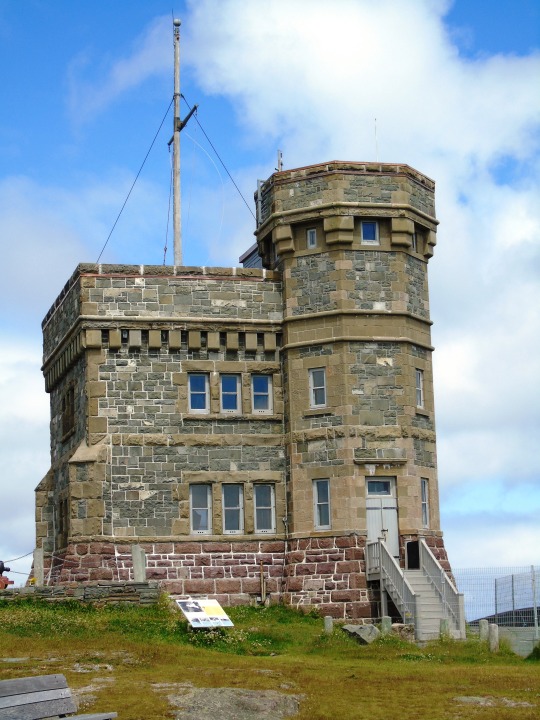




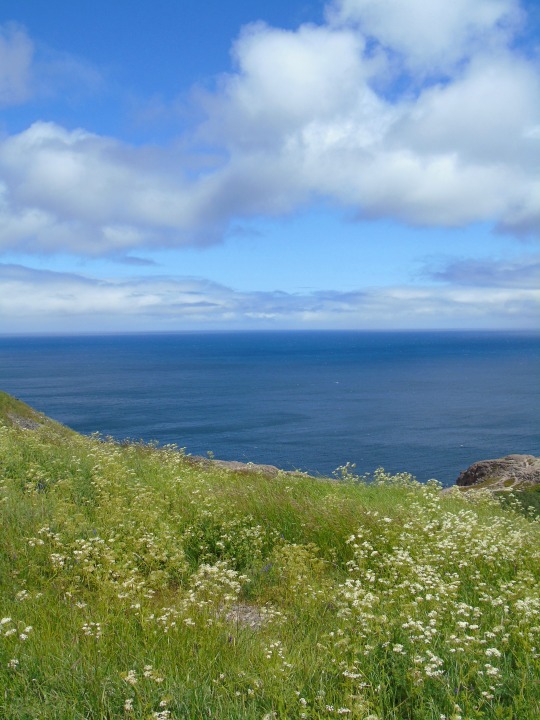
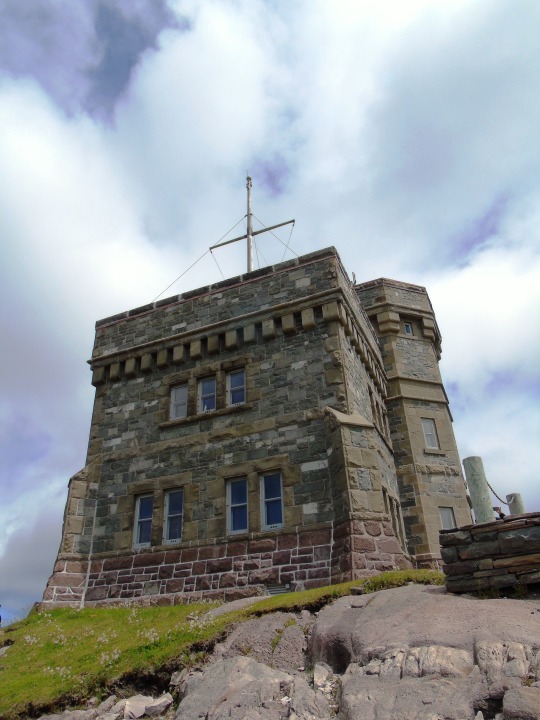


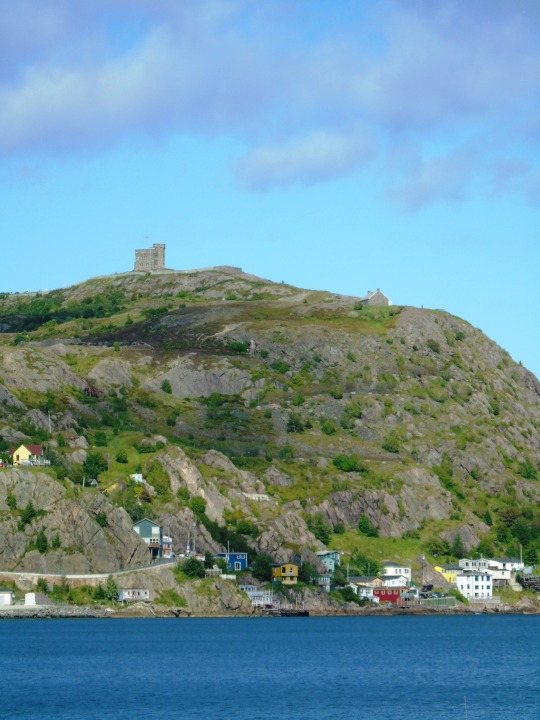


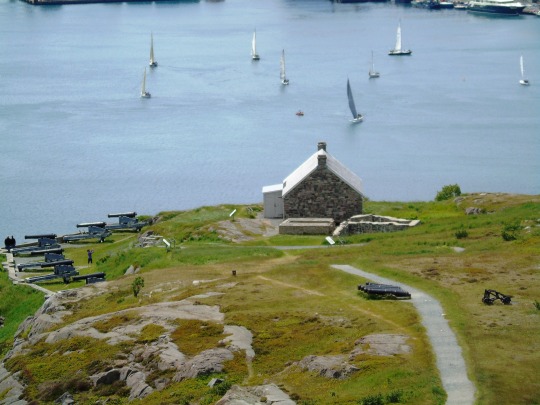

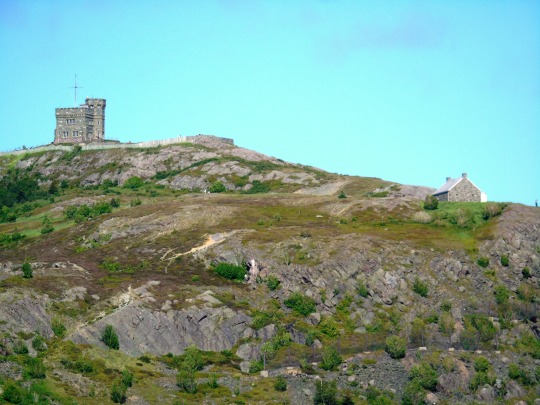
Seven Years’ War: Battle of Signal Hill was fought on September 15, 1762.
#Seven Years’ War#Battle of Signal Hill#15 September 1762#anniversary#Canadian history#travel#original photography#vacation#tourist attraction#landmark#architecture#cityscape#landscape#seascape#Atlantic Ocean#summer 2015#St. John's#Newfoundland#St. John's Harbour#Narrows of St. John's Harbour#Cabot Tower
3 notes
·
View notes
Photo



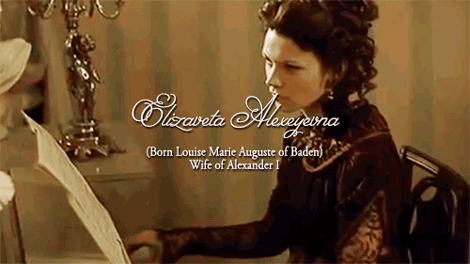
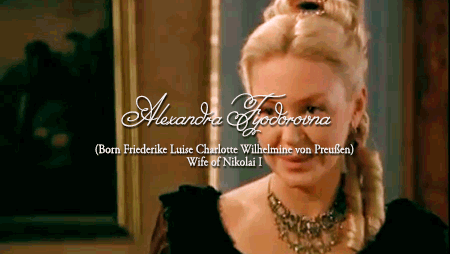


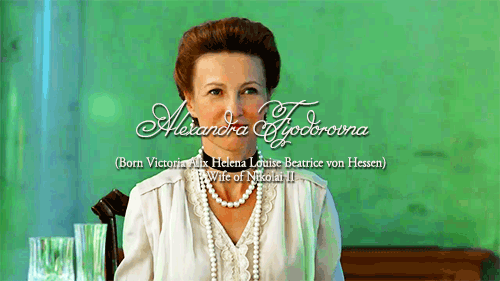
EMPRESS-CONSORTS OF RUSSIA
Ekaterina Alexeyevna (born Marta Helena Skowrońska). Married Tsar Peter I on February 19, 1712. Became Empress(-Consort) when Peter I took on the title of Emperor in 1721. After her husband’s death on January 28, 1725, she became Empress-Regnant, known as Catherine I, until her death on May 6, 1727.
Ekaterina Alexeyevna (born Sophie Friederike Auguste von Anhalt-Zerbst-Dornburg). Married Grand Duke Pyotr Fyodorovich on August 21, 1745. Empress-Consort to Peter III (January 5 1762 – July 9, 1762). After leading a coup d’etat that saw the abdication and assassination of her husband, she proclaimed herself Empress-Regnant and ruled as an autocrat for 34 years until her death.
Maria Fyodorovna (born Sophie Dorothea of Württemberg). Married Grand Duke Pavel Petrovich on September 26, 1776. (She was Paul’s second wife. His first wife, Natalia, had died in childbirth.) Empress-Consort to Paul I (November 17, 1796 – March 23, 1801). After Paul I’s assassination in a coup d’etat, Maria retained her status of the first lady of the empire, outranking the Empress-Consort Elizaveta Alexeyevna. She outlived not only her husband, but several of her children, including Emperor Alexander I and his wife, and died at age 69 in 1828.
Elizaveta Alexeyevana (born Louise Marie Auguste of Baden), Married Grand Duke Alexander Pavlovich on September 28, 1793. (They were both very young - 14 and 15 years old, respectively.) Empress-Consort to Alexander I (March 24 1801 – December 1, 1825). She outlived her husband by 5 months.
Alexandra Fyodorovna (born Friederike Luise Charlotte Wilhelmine von Preußen). Married Grand Duke Nikolai Pavlovich on July 13, 1817 (incidentally her birthday.) Empress-Consort to Nikolai I (December 1, 1825 – March 2, 1855). She outlived her husband by 5 years.
Maria Alexandrovna (born Maximilianne Wilhelmine Auguste Sophie Marie von Hessen). Married Grand Duke Alexander Nikolaevich on April 28, 1841. Empress-Consort to Alexander II (March 2, 1855 – June 3, 1880).
Maria Fyodorovna (born Marie Sophie Frederikke Dagmar of Denmark). She was originally engaged to Tsesarevich Nikolai Alexandrovich, her future husband’s older brother, but Nikolai died of meningitis before their wedding. Maria married Grand Duke Alexander Alexandrovich on November 9, 1866. Empress-Consort to Alexander III (March 13, 1881 – November 1, 1894). She outlived her husband by 34 years; she also survived the Russian Revolution and died in Denmark in 1928.
Alexandra Fyodorovna (born Victoria Alix Helena Louise Beatrice von Hessen). Married Nikolai II on November 26, 1894 and was Empress-Consort from that day until March 15, 1917. She was assassinated with the rest of her family on July 17, 1918.
#perioddramaedit#russian empire#Russia#historyedit#romanovs#grigoriy r#poor nastya#tdp#catherine (2014)#mathilde#poor poor paul#empress consorts of russia#op#my gifs
249 notes
·
View notes
Text
25th King of Portugal (5th of the Bragança Dynasty): King José I of Portugal, “The Reformer”

Reign: 31 July 1750 – 24 February 1777 Acclamation: 8 September 1750, Lisbon Predecessor: João V
José I (6 June 1714 in Lisbon – 24 February 1777 in Sintra), "The Reformer" ("o Reformador"), reigned as King of Portugal from 31 July 1750 until his death. Among other activities, José was devoted to hunting and the opera. Indeed, he assembled one of the greatest collections of operatic scores in Europe.

José was the third child of King João V of Portugal and his wife Maria Anna of Austria. José had an older brother Pedro, an older sister Barbara

and three younger brothers. At the death of his elder brother, who died at the age of two in 1714, José became Prince of Brazil as the heir apparent of the king, and Duke of Bragança.

On 19 January 1729, José married the Spanish Infanta Mariana Victoria of Spain, daughter of Philip V of Spain

and Elisabeth Farnese,

and his elder sister Barbara of Portugal married the future Ferdinand VI of Spain. Mariana Victoria loved music and hunting, just like her husband, but she was also a serious woman who disapproved of the king's love affairs and did not hesitate to expose them to acquaintances.

José succeeded to the Portuguese throne in 1750, when he was 36 years old, and almost immediately placed effective power in the hands of Sebastião José de Carvalho e Melo,

better known today as the Marquis of Pombal.

Indeed, the history of José’s reign is really that of Pombal himself. King José also declared his eldest daughter Maria Francisca as the official heiress of the throne and proclaimed her Princess of Brazil. By this time, the king did not believe he would ever father a son by his queen.
One of the most difficult situations faced by the king was the Franco-Spanish invasion of Portugal, in the end of the Seven Years' War (5 May-24 November 1762).

France and Spain sent an ultimatum in order to force Portugal to abandon its alliance with Great Britain and close her ports to British ships. D. José I refused to submit and asked for British help since both the country and the army were in a very poor condition, mainly because of the great 1755 Lisbon earthquake. England sent a force of 7,104 men led by Loudon

and Burgoyne,

and also an exceptional military leader, the Count of Lippe,

which reformed the Portuguese army and led the allied army of 14-15, 000 men in a victorious war. The Bourbon invaders first led by Sarria and then by Aranda

were thrice defeated by a combination of popular uprising, scorched earth strategy/famine and encircling movements by the regular Anglo-Portuguese troops, which like the militia, skilfully used the mountainous terrain at their advantage. The Spanish and French troops suffered staggering losses when they were driven out from Portugal and chased into Spain. As synthesized by historian Walter Dorn:
… Effort of the Bourbon powers to set up the beginnings of a 'continental system' by sending a summons to Portugal to close her ports to British ships and exclude Englishmen from Brazil trade. But the Portuguese minister, the Marquis of Pombal, refused, and with the assistance of Count Lippe and the English General Burgoyne broke the offensive of the Spanish invading army. D'Aranda, the Spanish General, was forced to retreat in disgrace. With the utter failure of the Spanish war machine everywhere, all the hopes which Choiseul [French Foreign Minister]

had placed on the Spanish alliance vanished. 'Had I known', he wrote, 'what I now know, I should have been very careful to cause to enter the war a power which by its feebleness can only ruin and destroy France'.
In South America, the war ended in a draw; the Portuguese took territory from Spain (most of the Rio Negro Valley) and defeated a Spanish invasion of Mato Grosso, while Spain conquered Colónia do Sacramento and the vast territory of Rio Grande do Sul (1763). The Treaty of Paris (1763) restored the status quo ante bellum. The rich and huge territory of Rio Grande do Sul would be retaken from the Spanish army during the undeclared war of 1763-1777.
The powerful Marquis of Pombal sought to overhaul all aspects of economic, social and colonial policy to make Portugal a more efficient contender with the other great powers of Europe, and thus enhance his own political stature. A conspiracy of nobles aimed at murdering King José and Pombal gave him the opportunity (some say, the pretext) to neutralize the Távora family in the Távora affair, and to expel the Jesuits in September 1759, thus gaining control of public education and a wealth of church lands and ushering Portugal into the Age of the Enlightenment.
The reign of José is also noteworthy for the Lisbon earthquake, firestorm and tsunami of 1 November 1755, in which between 30,000 and 40,000 people died.

The earthquake caused José to develop a severe case of claustrophobia, and he was never again comfortable living within a walled building. Consequently, he moved the royal court to an extensive complex of tents in the hills of Ajuda.

The Project for the Royal Palace in Campo de Ourique was an ambitious palatial complex planned for the Campo de Ourique neighborhood of Lisbon, but later abandoned due to a lack of impetus from the Portuguese Royal Family and a prioritization of other reconstruction efforts.
The capital was eventually rebuilt at great cost, and an equestrian statue of King José still dominates the Praça do Comércio, Lisbon's main plaza.


With José's death on 24 February 1777, the throne passed to his daughter Maria I and brother/son-in-law Pedro III. Pombal's iron rule was sharply brought to an end, because Maria disliked him since she had been heavily influenced by the Portuguese old nobility that strongly opposed Pombal.
He rest in the Bragança Pantheon

José I fathered eight children by the Queen, but only four daughters survived:
Maria Francisca Isabel Rita Gertrudes Joanna (17 December 1734 – 20 March 1816), married her uncle Infante Pedro of Portugal, with issue. Later Queen regnant of Portugal.
Maria Ana Francisca Dorotea Josefa Antonia Gertrudes Rita Joanna Efigenia (7 October 1736 – 6 May 1813), potential bride for Louis, Dauphin of France, but her mother refused to consent to the marriage, died unmarried.

Stillborn son (February 1739).
Maria Francisca Doroteia Josefa Antónia Gertrudes Rita Joanna Efigénia de Braganca (21 September 1739 – 14 January 1771), potential bride for Philippe Égalité but she refused to marry him, died unmarried.

Stillborn daughter (7 March 1742).
Stillborn daughter (15 October 1742).
Stillborn daughter (May 1744).
Maria Francisca Benedita Ana Isabel Joanna Antonia Laurencia Inacia Teresa Gertrudes Rita Rosa (25 July 1746 – 18 August 1829) married her nephew Infante José, Prince of Beira, no issue.

5 notes
·
View notes
Photo

Captain Philemon Pownall ( 1734-1780), by Joshua Reynolds,1769
He was born in Plymouth, the son of Israel Pownall who became the master-shipwright at that base and between 1756 and 1761 built many ships including the Royal George 100, Blenheim 90, Princess Amelia 80 and Mars 74. He was the brother of Jacob Pownall, the naval storekeeper at Gibraltar, and from 1782 at Plymouth. Pownall was commissioned lieutenant on 7 October 1755. He was promoted commander of the Favourite 16 on 6 August 1759, and in July 1761 was under the orders of Captain Charles Proby of the Thunderer 74 off Spain, being present at the capture of the Achille 64 and Bouffonne 32 by this officer’s squadron. On 21 May 1762 he earned himself the immense fortune of £64,872 when the Favourite assisted the Active 36, Captain Herbert Sawyer, in the capture of the Spanish register-ship Hermione, which had been bound for Cadiz from South America with a half million pounds worth of treasure aboard. The Spanish had been unaware of any declaration of war and they surrendered without coming to action. It was one of the greatest prizes ever taken by a British naval officer.
Pownall left the Favourite in August 1762, and although posted captain on 10 January 1771 he otherwise remained unemployed throughout the peace for the next thirteen years.
In December 1775 he returned to duty by joining the Blonde 32 which was recommissioning at Chatham, earning great praise in high circles for seeking service despite his immense wealth. In April he sailed for Quebec with twenty ships in convoy and by September was in the St. Lawrence River, prior to returning to England.
In January 1777 he removed to the Apollo 32, and embarking at Plymouth the commander-in-chief designate of the army in Canada, Lieutenant-General John Burgoyne, he returned to Quebec on 6 May. Later in the year he took the Boston privateer Freedom 12, but with the authorities not wishing to detain his ship on largely inactive duty off Canada he sailed for New York where, on 3 October, he supervised the transportation of the Army some sixty miles up the Hudson River to attack two rebel forts. Shortly afterwards he was sent to join Vice-Admiral Lord Howe’s fleet that had been engaged in the Philadelphia campaign from 25 August 1777, and he remained thereafter in the Delaware River. In the following year he served in Lord Howe’s defence of New York in July 1778 and the manoeuvres off Rhode Island in August 1778, where the Apollo sprung her fore and mainmasts and had to be escorted back to Sandy Hook. She returned home to be coppered at Plymouth over the winter.
On 31 January 1779 the Apollo was cruising off Brittany when she came upon a convoy of nine merchantmen under escort of the French frigate Oiseau 32, Lieutenant de Tarade. After being brought to action the Frenchman put up a brave fight against Pownall’s superior firepower and skill until the Apollo shot her colours away and Pownall’s men took possession of her. The Oiseau was carried to England in fair weather and bought into the service. Both Pownall, who received a ball to the left breast which was never extricated, and de Tarade were wounded in the action.
Pownall continued to command the Apollo in the Channel, and in company with the Jupiter 50, Captain Francis Reynolds, and Crescent 28, Captain Charles Hope, he assisted in the capture of the French cutters Mutine 14 and Pilote 14 on 2 October 1779. At the Moonlight Battle of 16 January 1780 the Apollo engaged the Monarca 70 for upwards of an hour, thereby enabling Admiral Sir George Rodney’s flagship, the Sandwich 90, to come up and capture her.
On 15 June 1780 Pownall lost his life with five of his men in an inconsequential and indecisive action with the French privateer Stanislas 26 in the Channel. Shortly after the action the privateer went aground off Ostend, and after being salvaged she was sold to the British Government to be commissioned as HMS Proselyte under Captain John Brown, whose father had landscaped the grounds of Pownall’s estate in Devon.
Pownall’s capture of the Hermione netted him a fortune some six hundred and forty times his annual salary and enabled him to marry the daughter of a Lisbon merchant who had earlier rejected the young naval officer on the basis that he had not the funds to maintain his daughter. Captain Sawyer married another daughter on the same basis. Pownall used his riches to purchase the Sharpham Estate in Ashprington, Devon, where he built a new manor house and obtained the services of Capability Brown to landscape his gardens.
Pownall was a brilliant and popular officer who was one of the stars of the navy and would undoubtedly have earned greater fame but for his early death. Sir Edward Pellew, the 1st Viscount Exmouth, was his devoted pupil, and this officer’s excellence in all aspects of the role of a naval commander reflected on the example he had been set by Pownall, a fact Pellew acknowledged by naming his eldest son after his mentor. Jervis described Pownall as ‘the best officer under every line of description in the service’.
17 notes
·
View notes
Photo

Vue de la descente a Terre Neuve par le chevalier de Ternay en 1762, Unknown artist
The Battle of Signal Hill was fought on September 15, 1762, and was the last battle of the North American theatre of the Seven Years' War. A British force under Lieutenant Colonel William Amherst recaptured St. John's, which the French had seized earlier that year in a surprise attack.
#Battle of Signal Hill#Seven Years' War#William Amherst#XVIII century#french history#british history#paintings#art#arte
0 notes
Text
Here is the comprehensive timeline of each character on this blog, including real events for reference, which are denoted with an asterisk.
17th Century
1682, 26 December - Jack Rackham is born in Leeds, England.*
1687, 14 July - The Rackham family relocates to Guardalavaca, Cuba for better economy.
1688, 1 March - Anne Bonny is born in Whitechapel, London, England.
1692, 31 May - William Cormac, Selma Diyadin, and their illegitimate daughter, Anne, move to the Province of Carolina.
1696 17 December - Selma Diyadin dies.
1697 9 July - Florence Rackham dies.
1697 15 July - Janet Rackham dies.
1698 6 February - Jack Rackham escapes his father’s debt aboard the pirate ship, Red Sun.
1698 1 May - Anne Bonny gets married.
1699 17 September - Jack Rackham and Anne Bonny meet.
18th Century
1709 20 December - Jack Rackham and Anne Bonny meet Charles Vane.
1758 - Hudson Fifing is born.
1762 10 September - Hudson’s father is tried and convicted of treason and conspiracy against the Crown.
1762 3 December - Hudson’s mother disappears after going to the prison ship her husband is incarcerated in to see if he is still alive.
1765 12 August - Hudson and Diana move to New York City.
1774 4 August - Hudson begins medical school at New College in Massachusetts.
1774 23 October - Bram Edrington is born.
1775 18 April - The American Revolution begins.*
1775 22 April - Anne Bonny dies of old age.
1775 14 May - Hudson and Diana move to Dover, Delaware to avoid British forces.
1775 31 May - Hudson returns to New York City.
1780 9 August - Bram Edrington begins his classical education.
1783 3 September - The American Revolution ends.*
1783 27 September - Pavel Dimitriyevich Faradavislas is born.
1784 8 November - Madeleine Sorensen is born aboard the Regalia.
1785 30 October - Hudson Fifing is impressed by the British Navy aboard HMS Contest.
1787 10 February - Contest is intercepted and sunk by the American privateer, King’s Folly.
1787 17 June - Hudson returns stateside.
1787 15 August - Bram Edrington begins his military education.
1791 19 May - Bram Edrington begins his military career as a sergeant.
1791 19 October - Hudson Fifing dies after being swept off the deck during a maelstrom, lost at sea.
1792 25 February - Bram purchases his commission as major.
1792 25 February - Edrington’s Reign of Terror begins.
1792 3 June - William Blakeney is born.
1793 - The War of the First Coalition begins.*
1793 21 January - King Louis XVI is guillotined.*
1793 December - Edrington’s Reign of Terror ends.
1793 13 December - Pavel Faraday breaks his leg.
1794 13 July - The Frogs and the Lobsters ( The Wrong War. )
1794 2 August - Bram Edrington weds Adelaide Sybil.
1794 30 August - Adelaide Sybil becomes pregnant.
1795 11 April - Philadelphia Edrington is born.
1795 18 June - Adelaide Sybil dies.
1796 22 May - Pavel Faraday joins his father at Oxford College.
1798 - The War of the First Coalition ends.*
1798 5 November - Pavel graduates with his degree in librarianship, and begins his career in espionage with the Kremlin.
1799 - The War of the Second Coalition begins.*
19th Centrury
1800 1 June - Napoleon’s victory in Marengo.*
1801 - War of the Second Coalition ends.*
1801 11 March - Madeleine’s father abandons her, leaving her as sole lighthouse keeper.
1801 1 October - Prime Minister Henry Addington signs preliminary peace agreement.*
1802 - The Peace of Amiens begins.*
1803 - William Blakeney goes to the Royal Naval Academy at Portsmouth.
1803 - The Peace of Amiens ends.*
1805 - William Blakeney graduates from the Royal Naval Academy of Portsmouth.
1805 - The War of the Third Coalition begins.*
1805 27 February - William Blakeney receives orders to report to the HMS Surprise.
1805 July - Master and Commander: The Far Side of the World
1806 - The War of the Fourth Coalition begins.*
1806 23 May - Bram Edrington retires from military service.
1807 - The War of the Fourth Coalition ends.*
1807 - The Peninsular War begins.*
1807 1 July - The Peace of Tisit begins.*
1807 24 July - William Blakeney recieves orders to report to the HMS Northumberland.
1808 2 July - British troops arrive in Portugal for the Peninsular War.*
1809 - The War of the Fifth Coalition begins.*
1809 16 June - Pavel Faraday is guillotined for espionage.
1809 31 October - William Blakeney passes his examination for lieutenant.
1809 6 December - William Blakeney reports to the HMS Bellona as second lieutenant under Cpt. Thomas Pullings.
1810 7 May - Philadelphia Edrington publishes her first editorial under the pseudonym “Thomas Wilson”.
1811 12 June - Philadelphia Edrington weds the Earl of Suffolk.
1812 - The War of the Sixth Coalition begins.*
1812 13 January - Bram Edrington dies of pneumonia.
1812 17 February - Philadelphia’s first child is born.
1812 June - The War of 1812 begins.*
1812 27 July - William Blakeney is promoted to first lieutenant of the HMS Bellona.
1812 7 November - William Blakeney dies of blood loss after a skirmish with the French ship, Inlassible.
1813 14 January - Napoleon gets whipped in Russia.*
1814 - The Peninsular War ends.*
1814 - The War of the Sixth Coalition ends.*
1814 19 September - Philadelphia Edrington’s second child is born.
1815 18 February - The War of 1812 ends.*
1815 1 April - The War of the Seventh Coalition ends.*
1832 31 March - Philadelphia Edrington dies from an auto - immune disorder.
1866 14 May - Madeleine Sorensen dies of old age.
2 notes
·
View notes
Text
Events 9.12
490 BC – Battle of Marathon: The conventionally accepted date for the Battle of Marathon. The Athenians and their Plataean allies defeat the first Persian invasion force of Greece. 372 – Sixteen Kingdoms: Jin Xiaowudi, age 10, succeeds his father Jin Jianwendi as Emperor of the Eastern Jin dynasty. 1213 – Albigensian Crusade: Simon de Montfort, 5th Earl of Leicester, defeats Peter II of Aragon at the Battle of Muret. 1229 – Battle of Portopí: The Aragonese army under the command of James I of Aragon disembarks at Santa Ponça, Majorca, with the purpose of conquering the island. 1309 – The First Siege of Gibraltar takes place in the context of the Spanish Reconquista pitting the forces of the Kingdom of Castile against the Emirate of Granada resulting in a Castilian victory. 1609 – Henry Hudson begins his exploration of the Hudson River while aboard the Halve Maen. 1634 – A gunpowder factory explodes in Valletta, Malta, killing 22 people and damaging several buildings. 1683 – Austro-Ottoman War: Battle of Vienna: Several European armies join forces to defeat the Ottoman Empire. 1762 – The Sultanate of Sulu ceded Balambangan Island to the British East India Company 1814 – Battle of North Point: an American detachment halts the British land advance to Baltimore in the War of 1812. 1846 – Elizabeth Barrett elopes with Robert Browning. 1847 – Mexican–American War: the Battle of Chapultepec begins. 1848 – A new constitution marks the establishment of Switzerland as a federal state. 1857 – The SS Central America sinks about 160 miles east of Cape Hatteras, North Carolina, drowning a total of 426 passengers and crew, including Captain William Lewis Herndon. The ship was carrying 13–15 tons of gold from the California Gold Rush. 1885 – Arbroath 36–0 Bon Accord, a world record scoreline in professional Association football. 1890 – Salisbury, Rhodesia, is founded. 1897 – Tirah Campaign: In the Battle of Saragarhi, ten thousand Pashtun tribesmen suffer several hundred casualties while attacking 21 Sikh soldiers in British service. 1906 – The Newport Transporter Bridge is opened in Newport, South Wales by Viscount Tredegar. 1910 – Premiere performance of Gustav Mahler's Symphony No. 8 in Munich (with a chorus of 852 singers and an orchestra of 171 players. Mahler's rehearsal assistant conductor was Bruno Walter). 1915 – French soldiers rescue over 4,000 Armenian genocide survivors stranded on Musa Dagh. 1923 – Southern Rhodesia, today called Zimbabwe, is annexed by the United Kingdom. 1933 – Leó Szilárd, waiting for a red light on Southampton Row in Bloomsbury, conceives the idea of the nuclear chain reaction. 1938 – Adolf Hitler demands autonomy and self-determination for the Germans of the Sudetenland region of Czechoslovakia. 1940 – Cave paintings are discovered in Lascaux, France. 1940 – The Hercules Powder Plant Disaster in the United States kills 51 people and injures over 200. 1942 – World War II: RMS Laconia, carrying civilians, Allied soldiers and Italian POWs is torpedoed off the coast of West Africa and sinks with a heavy loss of life. 1942 – World War II: First day of the Battle of Edson's Ridge during the Guadalcanal Campaign. U.S. Marines protecting Henderson Field are attacked by Japanese troops. 1943 – World War II: Benito Mussolini is rescued from house arrest by German commando forces led by Otto Skorzeny. 1944 – World War II: The liberation of Yugoslavia from Axis occupation continues. Bajina Bašta in western Serbia is among the liberated cities. 1945 – The People's Republic of Korea is proclaimed, bringing an end to Japanese rule over Korea. 1948 – Marshal Lin Biao, commander-in-chief of the Chinese communist Northeast Field Army, launched a massive offensive toward Jinzhou, Liaoshen Campaign has begun. 1953 – U.S. Senator and future President John Fitzgerald Kennedy marries Jacqueline Lee Bouvier at St. Mary's Church in Newport, Rhode Island. 1958 – Jack Kilby demonstrates the first working integrated circuit while working at Texas Instruments. 1959 – The Soviet Union launches a large rocket, Lunik II, at the Moon. 1959 – Bonanza premieres, the first regularly scheduled TV program presented in color. 1961 – The African and Malagasy Union is founded. 1962 – President Kennedy delivers his "We choose to go to the Moon" speech at Rice University. 1966 – Gemini 11, the penultimate mission of NASA's Gemini program, and the current human altitude record holder (except for the Apollo lunar missions). 1970 – Dawson's Field hijackings: Palestinian terrorists blow up three hijacked airliners in Jordan, continuing to hold the passengers hostage in various undisclosed locations in Amman. 1974 – Emperor Haile Selassie of Ethiopia, 'Messiah' of the Rastafari movement, is deposed following a military coup by the Derg, ending a reign of 58 years. 1977 – South African anti-apartheid activist Steve Biko dies in police custody. 1980 – Military coup in Turkey. 1983 – A Wells Fargo depot in West Hartford, Connecticut, United States, is robbed of approximately US$7 million by Los Macheteros. 1983 – The USSR vetoes a United Nations Security Council Resolution deploring the Soviet destruction of Korean Air Lines Flight 007. 1984 – Dwight Gooden sets the baseball record for strikeouts in a season by a rookie with 276, previously set by Herb Score with 246 in 1954. Gooden's 276 strikeouts that season, pitched in 218 innings, set the current record. 1988 – Hurricane Gilbert devastates Jamaica; it turns towards Mexico's Yucatán Peninsula two days later, causing an estimated $5 billion in damage. 1990 – The two German states and the Four Powers sign the Treaty on the Final Settlement with Respect to Germany in Moscow, paving the way for German reunification. 1990 – The Red Cross organizations of mainland China and Taiwan sign Kinmen Agreement on repatriation of illegal immigrants and criminal suspects after two days of talks in Kinmen, Fujian Province in response to the two tragedies in repatriation in the previous two months. It is the first agreement reached by private organizations across the Taiwan Strait. 1992 – NASA launches Space Shuttle Endeavour on STS-47 which marked the 50th shuttle mission. On board are Mae Carol Jemison, the first African-American woman in space, Mamoru Mohri, the first Japanese citizen to fly in a US spaceship, and Mark Lee and Jan Davis, the first married couple in space. 1992 – Abimael Guzmán, leader of the Shining Path, is captured by Peruvian special forces; shortly thereafter the rest of Shining Path's leadership fell as well. 1994 – Frank Eugene Corder fatally crashes a single-engine Cessna 150 into the White House's south lawn, striking the West wing. There were no other casualties. 2001 – Ansett Australia, Australia's first commercial interstate airline, collapses due to increased strain on the international airline industry, leaving 10,000 people unemployed. 2003 – The United Nations lifts sanctions against Libya after that country agreed to accept responsibility and recompense the families of victims in the 1988 bombing of Pan Am Flight 103. 2003 – Iraq War: In Fallujah, U.S. forces mistakenly shoot and kill eight Iraqi police officers. 2005 – Israeli-Palestinian conflict: the Israeli disengagement from Gaza is completed, leaving some 2,530 homes demolished. 2007 – Former Philippine President Joseph Estrada is convicted of plunder. 2008 – The 2008 Chatsworth train collision in Los Angeles between a Metrolink commuter train and a Union Pacific freight train kills 25 people. 2011 – The National September 11 Memorial & Museum in New York City opens to the public. 2015 – A series of explosions involving propane triggering nearby illegally stored mining detonators in the Indian town of Petlawad in the state of Madhya Pradesh kills at least 105 people with over 150 injured.
0 notes